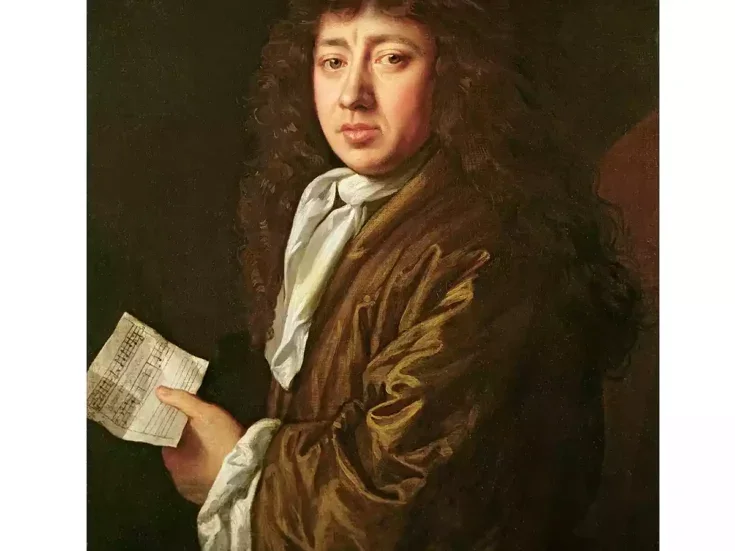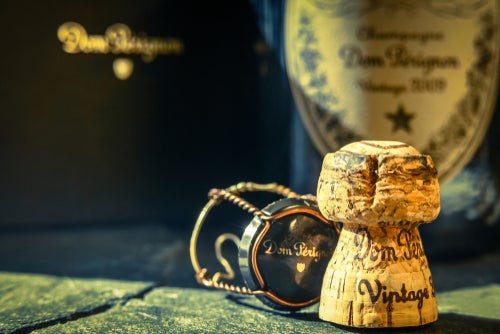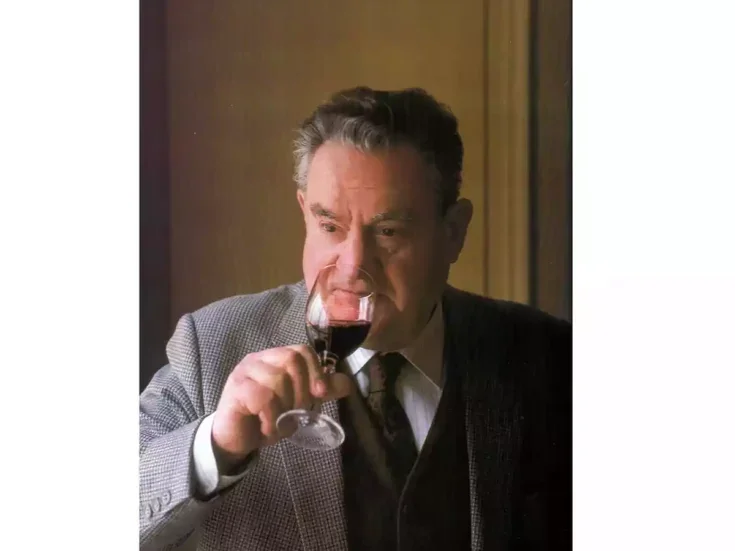
It was the scoop of the century for Ferrari Trento, and it caused a stir in the sparkling-wine world: Cyril Brun, a doyen of Champagne, previously chef de cave at Charles Heidsieck, with a track record including Veuve Clicquot, left his home region in summer 2023 to become cellar master at Ferrari, Italy’s most prestigious sparkling-wine producer in the subalpine province of Trento.
A fortuitous encounter
A year and two months into his new job, right in the middle of his second harvest, Brun explains how much he relishes the challenges posed by a completely different wine region. He had met the Lunelli family a few years previously at the awards dinner of the Champagne & Sparkling Wine World Championships in London, and was impressed by the wines. “What convinced me was the quality of the wine that was already made at the time and the potential of the territory,” Brun says about his move. He had a few exchanges with Matteo Lunelli, CEO of Ferrari Trento, “and step by step, I realized they were searching for someone to go one step further,” Brun explains. Ruben Larentis, the long-standing cellar master behind the multitude of award-winning Ferrari wines, was approaching retirement after 37 years with the company.
Ferrari Trento: Beyond the comfort zone
The move may have raised eyebrows—why leave Champagne at the top of your game?—but it makes sense. The size of the Ferrari Trento operation, its mix of estate-farmed and grower-sourced fruit from a combined 900-plus hectares (2,200 acres), and its quality ethos and ambition virtually forced the family to look outside Italy for someone who had both the logistical scope and qualitative nous to take their bollicine di montagna, their alpine sparkling wine, to the next level. And where better than Champagne? While the sparkling wines of Trentodoc do not share the same renown as Champagne, few non-Italians grasp the standing Ferrari has in Italy, where quality metodo classico has long been synonymous with the name. At the same time, Brun says he was “aiming to think a little out of my comfort zone and use my skills, my experience, to do something other than what I’ve been doing for the past 25 years.” He thus moved from Reims to Trento and is in his element—and already fluent in Italian.
Extra dimensions
“The most important thing is not to try to make Champagne in Trento, because I enjoy the identity and DNA of Ferrari. My vision was not to touch what existed but to go a little further in terms of detail,” Brun says. “I discovered a kind of Sleeping Beauty. They have done things very well for many, many years, but they were probably just missing this extra dimension from somewhere else to go one step further. You have Chardonnays that are very tight and crisp, with high freshness, well balanced. My idea is to amplify this and add an extra layer of complexity of texture. It is one of my ambitions to create a reserve library,” Brun says to illustrate how he intends to achieve that. He has also introduced a “tailor-made liqueur de dosage for each wine, a blend of mature and fresh wines,” and says they “will be gently moving to synthetic cork,” namely Mytic Diam, “to have more control of the oxygen transmission rate.” But Brun has also started a raft of trials and experiments: “The idea is that step by step we are going to have a much better experience of what we should do and what we should not do. But in this kind of job, you will get the right answer in five or ten years.”
Chalk and dolomite
Exchanging the chalk of Champagne for the dolomite of Trento also meant familiarizing himself with a whole new landscape, a different kind of viticulture. How did he set out to understand the sites and aspects? “I listened a lot to other people. I tasted a lot of different wines, I tasted all the Ferrari wines several times to really have the confidence to find the direction I should follow,” he explains. “And then, of course, there was an existing team, so I relied a lot on those guys because they have the memory of the winery. They helped me a lot.” Spending much time in the vineyards “was the key element in the first year. We spent hours and hours tasting the fruit and discovering nuances of territory, the basic knowledge you need to really understand how you can start working on your plans. Yet I’m still in the phase of learning,” he says.
Mountain fruit
Putting the differences into words, Brun says, “Chardonnays from Trento are probably a bit more vertical, sharper, more precise than those from Champagne, where the differences in the wines are based on the nuances of soil and subsoil. Here in Trento, the big difference is that nuance is linked to attitude,” a change that is significant with the highest elevation of the Montagne de Reims stopping where Trento gets going—with vineyards at altitudes from 1,000 to 2,600ft (300–800m). “Then you have the difference between Guyot and pergola,” he says about that crucial calibration between quantity and quality of fruit. (These are the traditional vine-training systems, with the higher-yielding pergola trentina still used in many vineyards.) “It is interesting to see Pinot Noir in a mountain territory,” he continues. “What is impressive is that, with the ripeness we get, we have no bitterness.” His first blends at Ferrari were bottled in March 2024, and he will see how they turned out “between Christmas 2025 and spring 2026.” He says he also learned “humility. You realize that after one harvest you think, ‘Okay, I know how to do it.’ Then with the second harvest, you learn almost as much again.”
Pride in doing something special
Implementing his plan for more reserve wines is costly. “You have to build a new winery. You have to extend your capacity. You have to get the family that is going to support that type of project, because it is long-term,” Brun says about the Lunellis. He is clear-eyed when he notes that an annual production of around 6 million bottles at Ferrari “compared to the size of sparkling wine” means “we do not exist. But I’m not sure that the objective of the family is to double or triple the volume—rather, it’s to have the pride of doing something special that will enhance the identity of the territory. Volume is secondary every time we speak with Matteo and the family. The answer is not based on figures; it’s based on where we are and where we want to go.”
Curiosity and scamorza
Brun’s decision took courage—leaving not only familiarity but also prestige behind. He could easily have rested on his (well-deserved) laurels. “You know, I’d been doing the same job for almost 25 years in Champagne. I was fine, I was in a very comfortable space, and I could have kept going for many, many years. I think it was a great opportunity,” he says. “It’s always the same thing; it’s a question of people. When I met the Lunelli family, we were very aligned. I think I was in need of a new energy, doing something else. It was a family decision we shared with my wife and my boys. We all agreed that it was probably the right thing. This is the last and final location to do this sort of thing, because I’m 55, and probably in five years’ time, nobody will make this kind of offer any longer in terms of thinking out of the box.” He adds, “The main element is to remain curious.” This is a quality he also extends beyond wine. His colleagues love that this Frenchman is curious about all the Italian cheeses—and he recommends scamorza with the upcoming release of Riserva Lunelli, the oak-aged blanc de blancs.
Tasting Ferrari Trento releases
Ferrari Riserva Lunelli 2016
The Chardonnay base wine was fermented in oak, mostly in 40hl Stockinger Fuder and some small barriques for seven months, with full malolactic fermentation. The wine was disgorged in March 2024 with a dosage of 6g/l.
The nose is immediately creamy, with a slight touch of vanilla. Saltiness on the palate is dispersed by the sprightly mousse, with energy and a crisp freshness of lemony verve that seeps into a lovely, creamy, yeasty umami note. The oak-given creaminess cannot suppress the verticality of the wine, which shows its autolysis as yeasty savor and gives an impression of stone. Very salty and long—a total umami hit. | 94
Giulio Ferrari Riserva del Fondatore 2015
This blanc de blancs was disgorged in September 2023 with a dosage of 4g/l.
Cream, intense lemon lift, and a lovely sense of lemon balm bathed in lemon oil playing on the nose. The palate is creamy, smooth, fluid, soothing, with a real spine of freshness and a pithy edge, almost with a sense of conifer. Still taut, exquisitely bright, this needs to uncoil but exhibits such lovely freshness and poise. It is clearly elegant and long and contoured, with salty stone. While it is lovely now, this will gain immensely with bottle age. | 96






